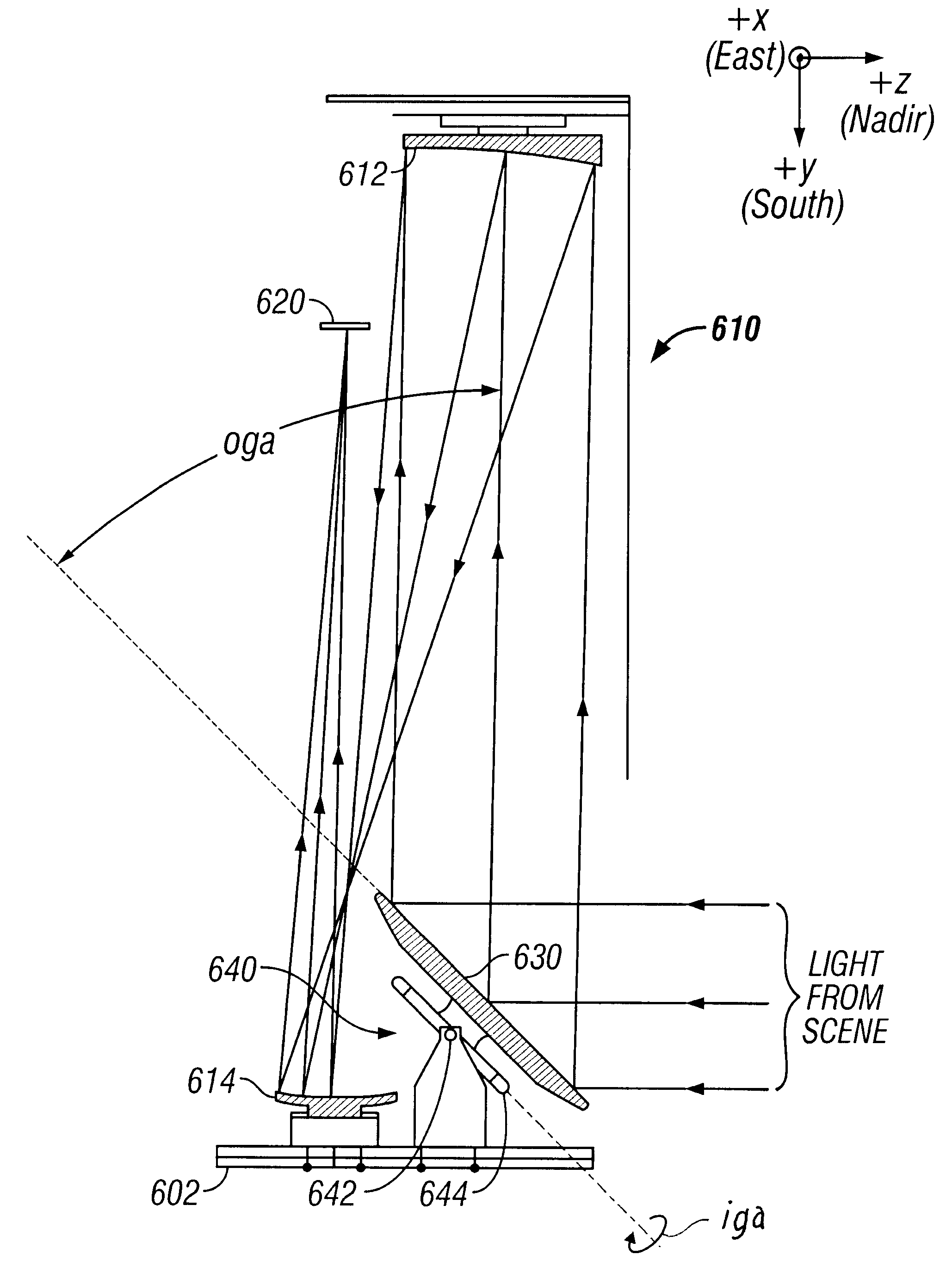Method and apparatus for imaging a field of regard by scanning the field of view of an imaging electro-optical system in a series of conical arcs to compensate for image rotation
- Summary
- Abstract
- Description
- Claims
- Application Information
AI Technical Summary
Problems solved by technology
Method used
Image
Examples
Embodiment Construction
geosynchronous imager according to the present invention has been designed to satisfy two sets of requirements: those for a next-generation operational weather imager and those for a geostationary scientific instrument. It is to be mounted on a three-axis stabilized geostationary satellite. It has 18 spectral channels ranging from 0.47 to 13.3 .mu.m. It scans the full Earth disk, from geosynchronous orbit, in less than 15 minutes while simultaneously scanning smaller frames at higher rates. To achieve the required coverage rate, the exemplary geosynchronous imager scans with long linear arrays that subtend 0.8.degree.. It has a plane scan mirror in object space, mounted on a two-axis gimbal system, followed by a three-mirror, off-axis, all-reflective telescope. Dichroic beam splitters allow the geosynchronous imager to have four co-registered focal planes in four different wavelength bands, each of which has several linear focal plane arrays (FPA's) that are scanned sequentially ove...
PUM
 Login to View More
Login to View More Abstract
Description
Claims
Application Information
 Login to View More
Login to View More - R&D
- Intellectual Property
- Life Sciences
- Materials
- Tech Scout
- Unparalleled Data Quality
- Higher Quality Content
- 60% Fewer Hallucinations
Browse by: Latest US Patents, China's latest patents, Technical Efficacy Thesaurus, Application Domain, Technology Topic, Popular Technical Reports.
© 2025 PatSnap. All rights reserved.Legal|Privacy policy|Modern Slavery Act Transparency Statement|Sitemap|About US| Contact US: help@patsnap.com



